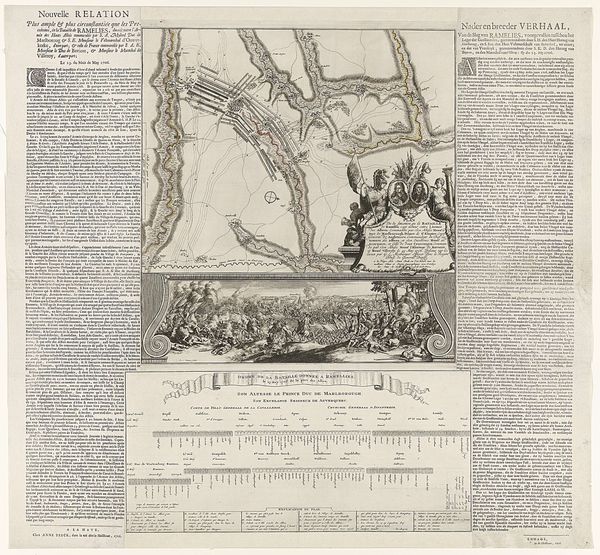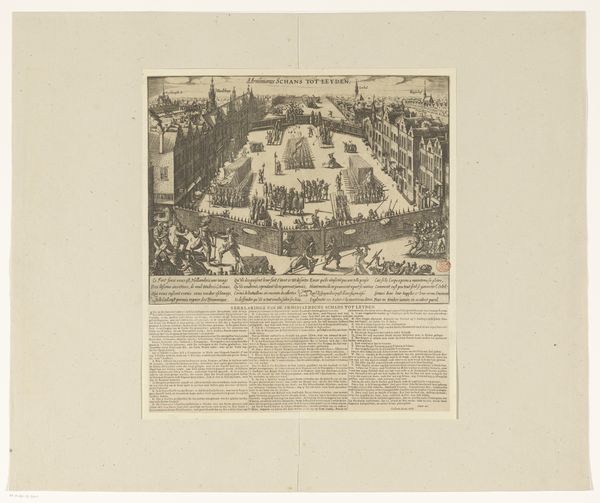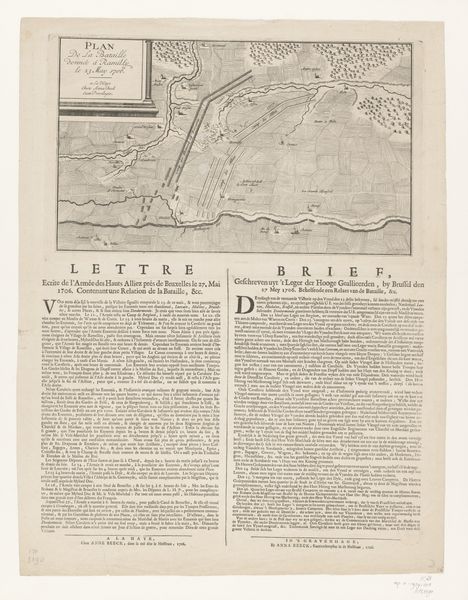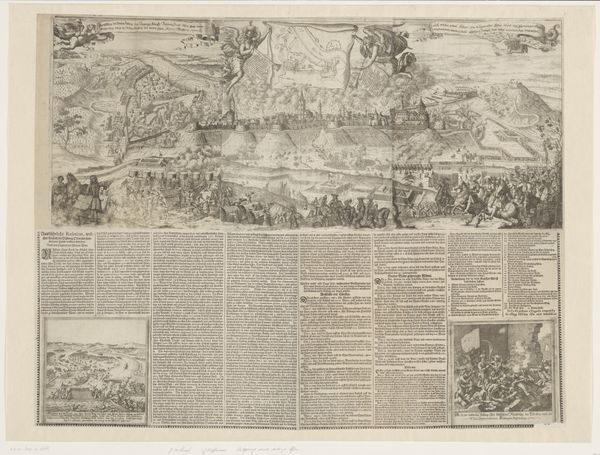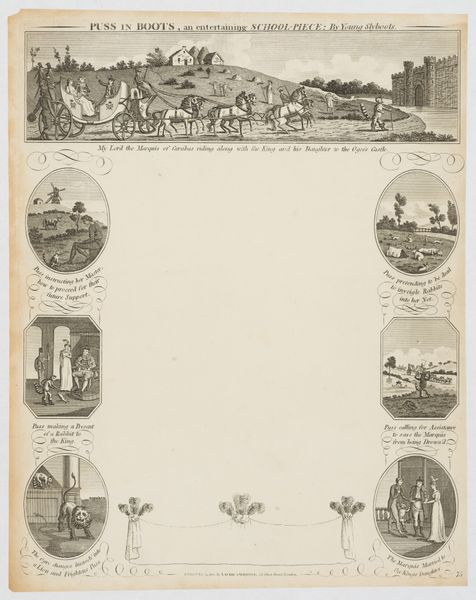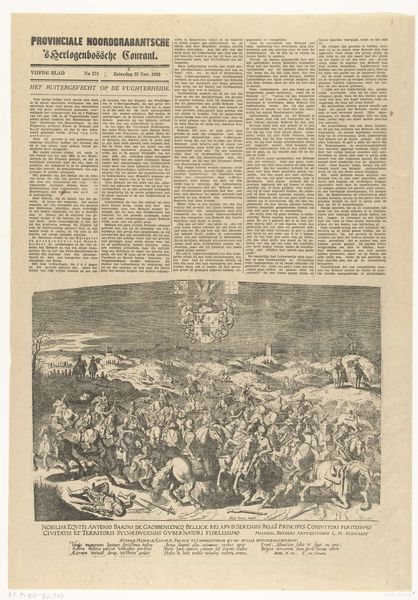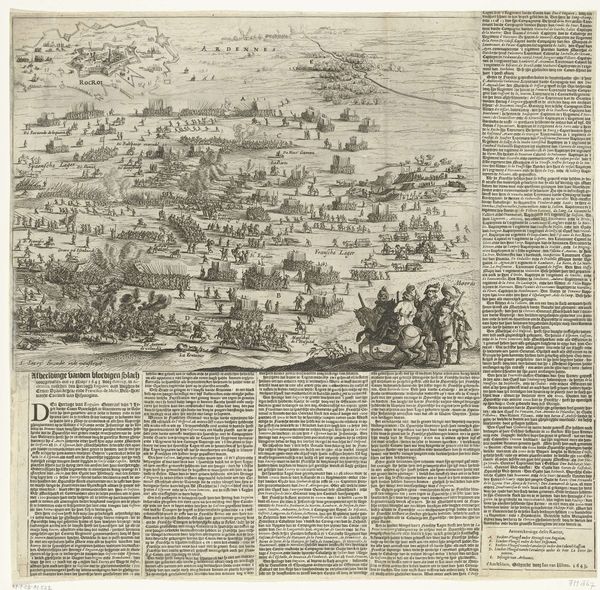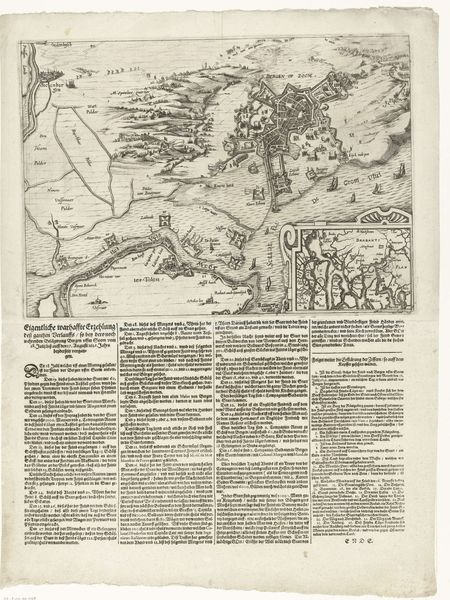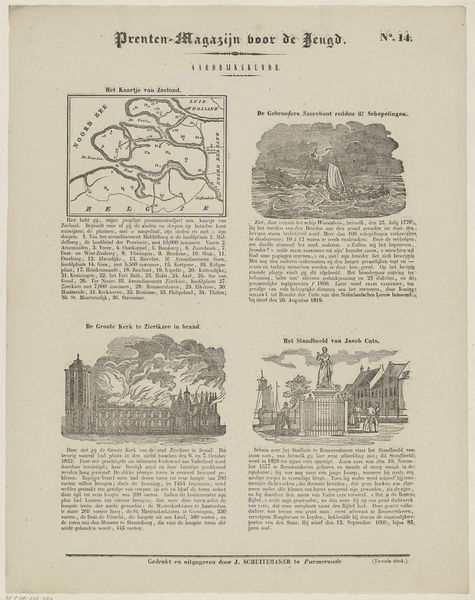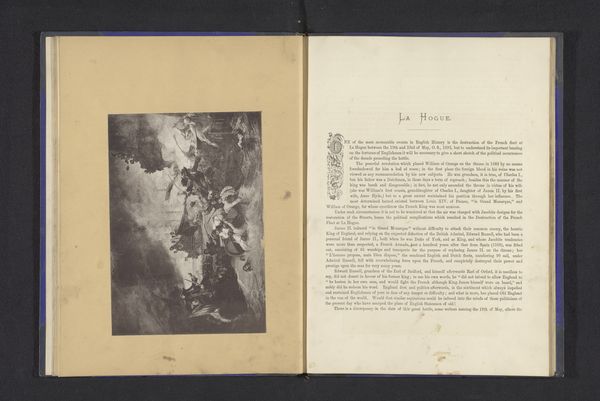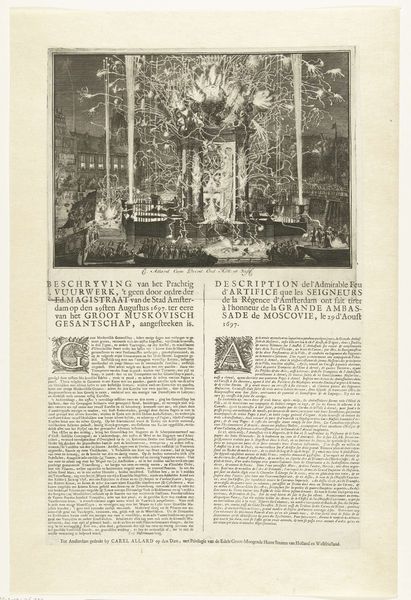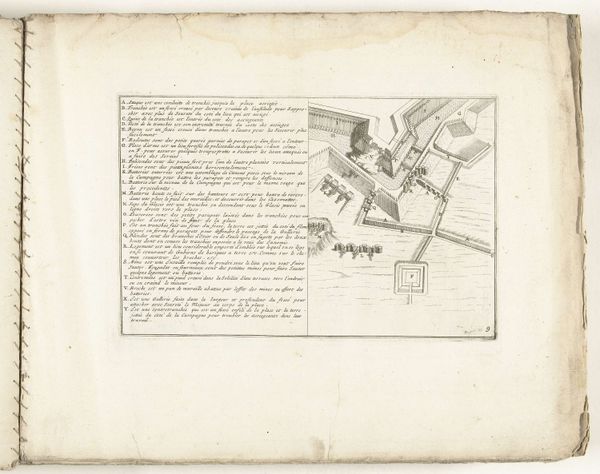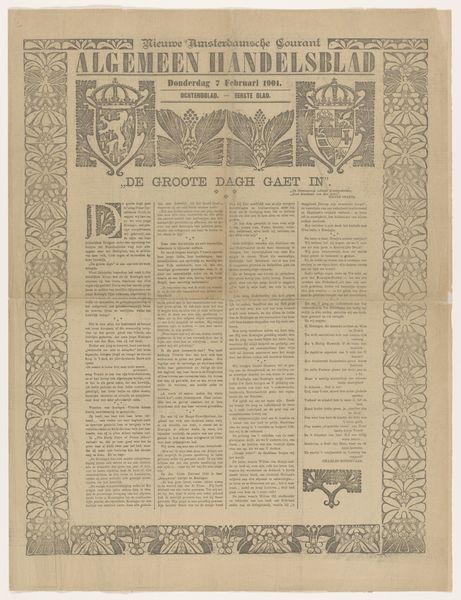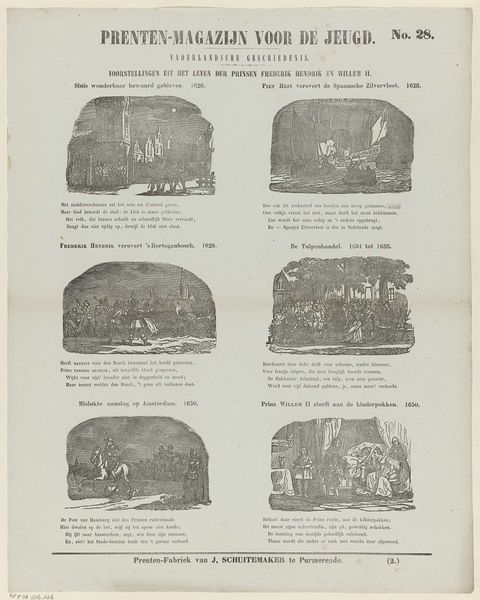
print, engraving
#
baroque
# print
#
landscape
#
line
#
cityscape
#
history-painting
#
engraving
#
realism
Dimensions: height 542 mm, width 401 mm
Copyright: Rijks Museum: Open Domain
Romeyn de Hooghe created this print of the Siege of Groningen in 1672, using etching and engraving. These are intaglio processes, meaning the image is incised into a metal plate, which is then inked and pressed onto paper. The fine, precise lines speak to the skilled labor involved. The burin, a tool used in engraving, requires considerable training to master. Look closely, and you'll see the different qualities of line achieved through etching – which has a more fluid, spontaneous character – versus the more deliberate, controlled marks of the engraving. De Hooghe’s masterful combination of these techniques, was very much in demand at the time, since the printmaking trade played a crucial role in disseminating information and shaping public opinion. Consider the social context: prints like this weren't just art objects; they were news, propaganda, and historical records all rolled into one. The relatively low cost of prints allowed for broad distribution, making them accessible to a wide audience. De Hooghe's print demonstrates how traditional craft skills intersected with the burgeoning media landscape of the 17th century, challenging our conventional notions about art's role in society.
Comments
No comments
Be the first to comment and join the conversation on the ultimate creative platform.
